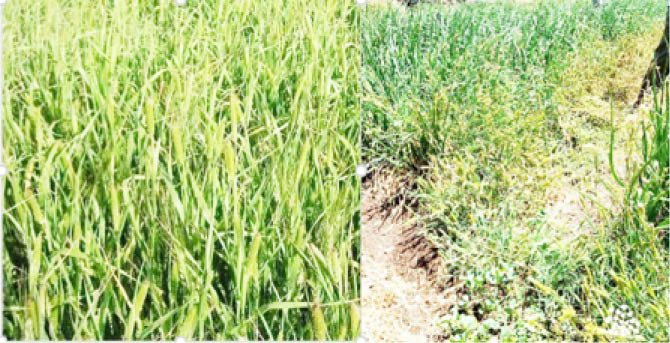Growers must control weeds that compete with crops on the available resources such as water, nutrients and sunlight, resulting in 35 to 100 per cent yield losses.
Proper weed management is currently based on cultural and chemical methods, whereas biological control methods are employed only in specific cases.
- NRM’s national convention for March 30 in Abuja
- As nations prioritise clean energy, Nigeria still struggling with fossil fuel
Chemical weed control, applied together with a limited number of cultural methods, is currently the most common practice for minimising the impact of weeds on crop productivity.
Over-reliance of farmers on herbicides as the main technology for combating weeds enhances the evolution of numerous weed species, which are no longer controlled by using herbicides.
These herbicide-resistant weeds (HRW) include annual and perennial grasses and broad-leaved plants threatening the sustainability of the agro-ecosystem all over the world.
Herbicide resistance is defined as the inherited ability of a plant to survive herbicide application to which the wild-type was susceptible.
Individual HRW occur naturally within a population at a very low frequency (a few plants within a population of trillions of plants), but their share in the weed population increases due to a high selection pressure employed by a repeated application of the same herbicide, at high rates and at the same field (monoculture).
Lack of proper rotation of crop and herbicides allows these few resistant plants to survive, reproduce and become visible within three to 15 years, and later on become dominant in the field.
So far, more than 100 weed species were reported as resistant to PSII inhibitors. The most prevalent resistance has evolved to Aceto-Lactate Synthase (ALS) inhibiting herbicides (~160 weed species), followed by approximately 50 grass weed species that evolved resistance to Acetyl CoA Carboxylase (ACCase) inhibitors.
A similar number of weed species was reported as resistant to glyphosate, a widely-used non-selective herbicide that provides a unique control of a wide range of weeds in arable and perennial crops, as well as in non-agricultural areas.
A dramatic increase in the number of glyphosate-resistant weeds was observed since 1996 following the introduction of the genetically- reduced or lack of plant response to herbicides (resistance), which may occur due to a genetic alteration of the herbicide-binding site (TSR), such as point mutation) that modify the sequence of amino acids in the target protein or overexpression of the target enzyme.
The presence of such a point mutation results in changes in the structure of the herbicide-binding niche, hence reducing or even preventing the herbicide molecules from binding to the target site resulting in control failure. The inheritance of TSR is usually controlled by a single or two dominant nuclear genes.
However, plants that evolved resistance to PSII inhibiting herbicides, are maternally-inherited. In the absence of herbicide application, HRW may exhibit reduced biomass and seed fecundity relative to the susceptible wild-type (ecological fitness or resistance penalty), which may reduce their competitive ability with the wild type.
Hence, when competing with the wild type population in the absence of a selector (herbicide), their proportion in the weed population will slowly decrease until almost complete disappearance.
Such a phenomenon has occurred in recent years with the triazine-resistant weeds that were almost eradicated in Europe following a regulatory ban on the use of these groups of chemicals.
Currently, resistance traits were confirmed globally, to most known herbicide sites of action, in 71 countries in all continents. HRW are causing huge economic and environmental damage, posing a great challenge to scientists to develop and apply cost-effective and environmentally-accepted weed management practices.
The introduction of new technologies such as remote sensing from satellites, aircrafts and drones, precision weed identification and precise herbicide application as well as robotics, provide the farmer with new tools to be incorporated in the current weed management practices.
In arable crops, weed seed destruction and removal during harvest (HWSC) is becoming more popular in Australia, North America and in Europe (and in advanced experimental stage in Israel) as a new approach to combat HRW.
In order to secure the future food supply, there is an urgent need to wisely integrate these new technologies along with a rational use of herbicides as essential parts of the crop management.
Source: IsraelAgri

 Join Daily Trust WhatsApp Community For Quick Access To News and Happenings Around You.
Join Daily Trust WhatsApp Community For Quick Access To News and Happenings Around You.


